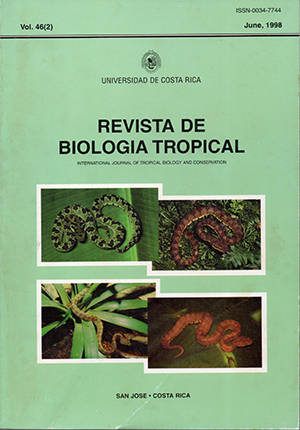Abstract
Aspects of the biology of Ovachlamysfulgens (Gude 1900) were studíed under laboratory conditions in Costa Rica for 16 months. The Iifespan of this snail in captivity was about nine months (N= 22) and it eould lay viable eggs without mating (N= 40). Oviposition began 42 days after eclosion, when shell diameter averaged 5.12 mm (N= 24). Clutches had about three eggs each (N= 252). One.clutch was laid daily over periods of one to four days, with intervals of one to two days (N= 252). Age, shelI diameter and clutch size were positively correlated (N= 1097) as were shell diameter of adult, egg diameter and shell diameter of the offspring (N= 136). Oviposition took place between crevices of the soil and in the leaf ¡itter. Eggs had a soft egg shell and were laid semi-hydrated; they hydrated by absorbing water from the surroundings (N= 21). This strategy may be the evolutionary compromise between a mechanical limitatíon (small body size) and the advantage of producing bigger eggs with a larger amount of nutritive substances. At room temperature (mean = 21 oC) egg eclosion took place in 14 days (N= 67) and in 11 days a! 28 oC (N= 32). Egg shell dissolution was not unifonn (N= 107), it began in a local area, that usually was the side on wbich it rested (N= 46). The fae! that eggs with and without an embryo (N= 5) underwent the same process of egg shell's calcium dissolution suggested a chemical mechanism. Embryos did not induce the process, but accelerated it. Egg viability was decreased by the tannins of the surrounding leaf litter (N= 50). Juveniles could feed on leaves of Persea americana (Lauraceae) (N= 299). Wben disturbed tbis snail is able to jump by using its caudal hom and the posterior end of the foot as a catapult##plugins.facebook.comentarios##

This work is licensed under a Creative Commons Attribution 4.0 International License.
Copyright (c) 1998 Revista de Biología Tropical
Downloads
Download data is not yet available.






